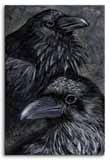Digging
Composition 9
[End
Projector slide 1]
Lastly, I want to touch on evaluation of MOO-based writing projects.
Evaluation criteria will, of course, depend upon the goals of the
course and of the particular assignment. For major MOO-projects in
a composition class, I’m interested in two things: Rhetorical
principles and demonstration of knowledge. Questions I ask include:
[End
Projector slide 2]
Does the MOO project make sense? By that I mean:
-
does the project get its meaning across in some
coherent way?
-
do the rooms and their objects relate in some way
to their content/meaning?
-
can one tell where the project ends and the rest
of the MOO begins?
[End
Projector slide 3]
Does the MOO project demonstrate knowledge?
-
does the project not only have a message, but is
that message worthwhile (is it the kind of thinking we would expect
from a traditional paper)?
-
is the information in the MOO project factual, logical,
supported well, and documented?
-
do the rooms and objects demonstrate an understanding
of the topic?
[End
Projector slide 4]
Does the MOO project demonstrate rhetorical awareness?
-
is the project navigable?
-
are there cues to help readers decide what they
might want to look at more closely?
-
do the rooms have objects which impart information,
or are there empty rooms with nothing but description?
-
is the project accessible for the intended audience?
Does the audience need to bring special knowledge with them in order
to understand the project?
Digging 1 | Digging
2 | Digging 3 | Digging
4 | Digging 5 | Digging
6 | Digging 7 | Digging
8 | Digging 10
|
